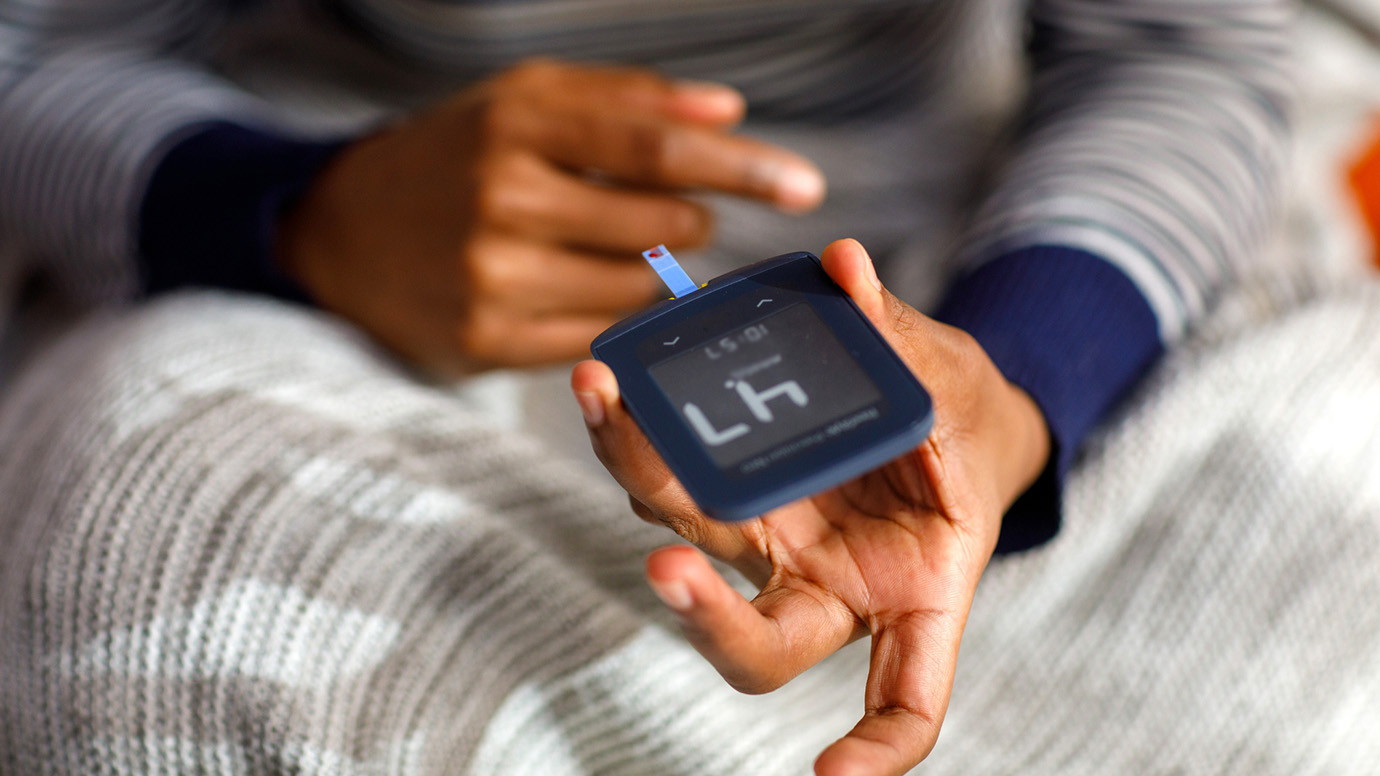Managing Lows While Living Alone
Written by: Julia Sclafani
6 minute read
August 30, 2022
Despite living with type 2 diabetes for nearly a decade, Kathleen Mc Ilraith had to reassess her blood sugar management when she started experiencing hypoglycemia on insulin.
Low blood sugar is something many people with type 2 diabetes (T2D) or prediabetes have experienced.
However, experiencing low blood sugar after starting insulin therapy to manage T2D may feel different. After all, exogenous insulin—the kind you inject—impacts the body differently than the insulin your body makes itself.
For Kathleen Mc Ilraith, who has lived with T2D for nearly a decade, treating for lows wasn’t part of her diabetes education.
Facing her type 2 diabetes diagnosis
Mc Ilraith, 74, remembered her T2D diagnosis nine years ago as “catastrophic,” she said.
“It was a complete reorganization of my life and my values. I was shocked.”
Mc Ilraith was first diagnosed with prediabetes in the early 1990s. Although she watched her mother live with T2D, she didn’t feel it prepared her for the many facets of diabetes management—checking and logging her blood glucose multiple times a day, adjusting to medication management and even the possibility of low blood sugar.
Weathering the pandemic solo
Living in rural Wisconsin, Mc Ilrath’s primary care practice didn’t have a specialist in diabetes.
Then the COVID-19 pandemic hit. She had stopped exercising at her local pool to avoid COVID exposure and her doctor’s office was limiting non-urgent visits. Throughout 2020, Mc Ilraith struggled to correct frequent high blood sugar levels.
“My numbers were way out of whack. I was looking at numbers in the four hundreds, and there was nothing I could do,” she said.
During this time, the practice partnered with an endocrinologist and Mc Ilraith got her first referral.
Seeing an endocrinologist after years with T2D
Like many people with T2D, Mc Ilraith had never been referred to a diabetes specialist. This is especially common in rural areas, like Mc Ilraith’s, where a shortage of specialists or a long drive to a major city can make specialists inaccessible.
Working with an endocrinologist changed the course of Mc Ilraith’s diabetes management, she said. Her new doctor started her right away on twice-daily insulin.
“The insulin is a game changer in so many ways,” she said.
Telehealth also radically changed how Mc Ilraith interacts with her healthcare team. Over her practice’s web portal, she can contact her endocrinologist in between her regular visits and easily schedule video appointments.
“I get immediate feedback,” she said.
Being unprepared for low blood sugars
Learning to manage her blood sugar with insulin required “a whole new skill set” for Mc Ilraith, she said.
When first prescribed insulin, her doctor and diabetes educator both warned about the possibility of hypoglycemia or low blood sugar. However, “the first time I had a low was a shock,” she recalled.
Hypoglycemia is when your blood sugar level drops below 3.9 mmol/dL70 mg/dL. Severe hypoglycemia is when your blood sugar level drops below 3 mmol/dL54 mg/dL. Having low blood sugar is dangerous and needs to be treated right away. Left untreated, severe hypoglycemia can lead to unconsciousness, seizures and even death.
For some people with diabetes, especially if you routinely experience high blood sugar, the threshold for when you start to feel symptoms of severe low blood sugar may be higher.
“All of a sudden I felt like I was looking down a tunnel. Everything was moving away from me but I was staying in one spot. I realized I probably was having a low,” Mc Ilraith said.
When she checked her blood sugar it was 4 mmol/dL60 mg/dL.
Mc Ilraith had experienced low blood sugar before using insulin, so when the symptoms hit, she knew it could be a sign of hypoglycemia. Nonetheless, this low felt different.
“I didn’t realize how insulin makes you feel different from the insulin your body produces. It’s a real learning curve,” she said.
Mc Ilraith lives alone and understood she had to act quickly.
“You have seconds to make decisions. And they’ve got to be that fast because the repercussions are deadly,” she said. “If I didn’t take some kind of action I was going to go into a coma and that was going to be the end of it because I was by myself.”
She decided to make herself a sandwich, not wanting to overcorrect and end up with high blood sugar.
“I felt like I was in control. I was sitting and my phone was next to me. I could call someone if I needed to.”
Managing low blood sugars while living independently
Mc Ilraith has made adjustments to her diabetes management since starting insulin therapy.
Now, she’s more prepared for low blood sugar. Mc Ilraith used to keep glucose tablets on hand but realized she prefers Smarties candy for their smaller size.
She’s returned to swimming, but her pool routine also looks different with insulin, since hypoglycemia can occur during or after a workout.
“I’ve had several lows and had to be taken out of the pool,” Mc Ilraith recalled.
She’s gotten to know the signs of her blood sugar going low. “When my cognitive function is impaired, that’s a big deal—I’m usually in the 70s by then,” she said.
The staff at the pool knows she lives with diabetes. She carries her low blood sugar supplies with her when she swims and the people around her know what to look for and how to help.
She also keeps supplies around her apartment so she can address lows when she starts to feel the telltale symptoms.
Thriving with T2D
Insulin can be a life-changing tool for managing T2D. For Mc Ilraith, after living with prediabetes and T2D, insulin completely changed her blood sugar management.
Equipped with the right knowledge and tools, you can thrive while living alone and using insulin to manage T2D. The key is to have a plan for emergencies like hypoglycemia.
This may include storing glucose tablets or your favorite low snacks where you might need them—like in your desk, car, gym bag, or bedside table. It can also include requesting a glucagon prescription and keeping it filled and up to date.
Glucagon is a life-saving hormone that can rapidly treat severe low blood sugar. It may be the right choice if you aren’t able to drink or swallow food due to symptoms of hypoglycemia. It can also be administered by another person in the case that you’re unconscious.
It’s important that people around you know how to help—this can mean educating family, friends, or even a neighbor or coworker on severe hypoglycemia and what to do if you can’t treat a severe low blood sugar yourself.
For Mc Ilraith, learning how her body responds to insulin therapy—and how to deal with and prevent lows—is just part of the process.
“Here I am almost 10 years later, I’m thriving,” she said.
Editor’s note: Educational content related to severe hypoglycemia is made possible with support from Lilly Diabetes, an active partner of Beyond Type 2 at the time of publication. Editorial control rests solely on Beyond Type 2.
Related Resources

Managing diabetes can feel like a daunting journey, but for Chef Robert Lewis, it’s been...
Read more

Managing type 2 diabetes means keeping your blood sugar levels within a healthy range and...
Read more

Physical activity plays a crucial role in managing diabetes, and walking is an easy, effective...
Read more


